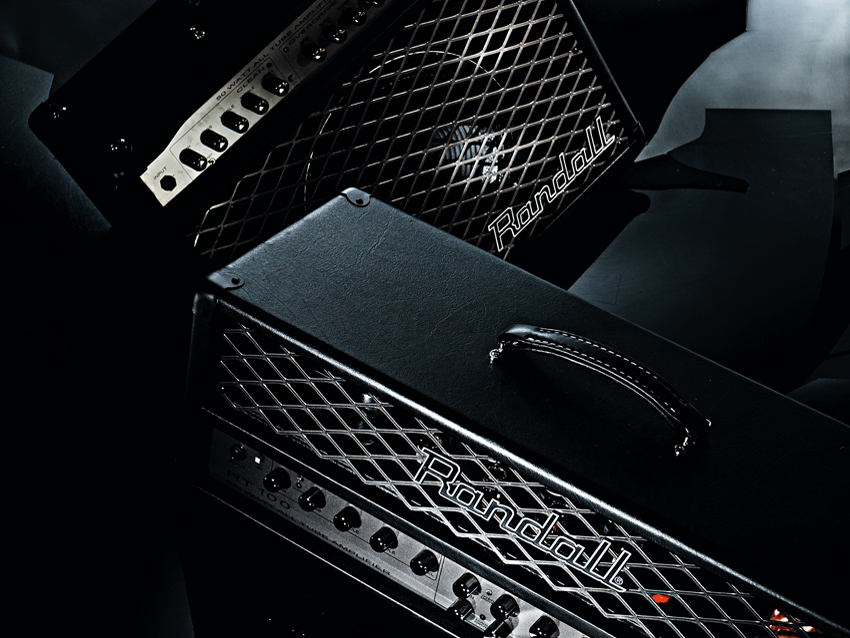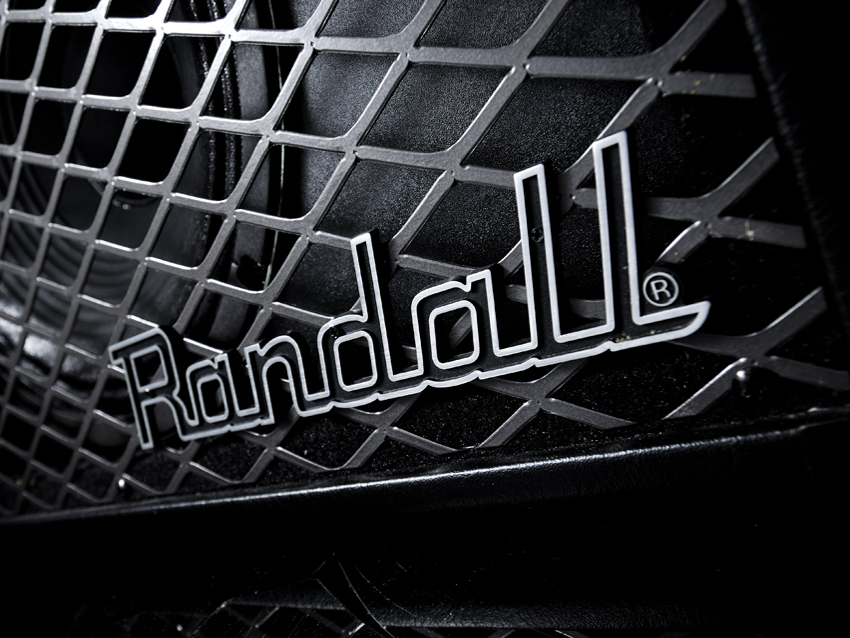MusicRadar Verdict
A pair of good options for hard rock and metal players.
Pros
- +
Affordable. Nicely styled. Well made. Good metal sound.
Cons
- -
You can't footswitch the reverb and effects loop on the head.
MusicRadar's got your back

Randall RT50C & RT100H

Randall RT50C & RT100H

Randall RT50C & RT100H

Randall RT50C & RT100H
Randall is another well- known American brand that's beginning to renew its profile in the UK and Europe, thanks to a recent change in distribution.
The company was established in the early '70s by the late Don Randall, Leo Fender's business partner, who was responsible among other things for naming many of Fender's key products, including the Stratocaster and Telecaster.
"Components appear to be of a decent standard and what wiring there is looks pretty neat, too."
Today, under the guidance of US Music Corp, Randall continues to thrive in the USA and is particularly favoured by metal players, at whom many of its products are aimed.
At Winter NAMM 2010 Randall introduced a new range of entry-level all-valve heads and combos, the RT Series, designed with assistance from hard rock/metal crossover artist Joe Delany and manufactured in China.
Now available in the UK we're looking at two of them, the RT50C 1 x 12 combo and the RT100 three-channel head.
Build
Both combo and head come in nicely proportioned well-built cabinets covered in a decently thick grade of vinyl that should stand up to most knocks without any problem. The black on grey styling with metal mesh speaker grille adds to the aggressive looks and makes it pretty clear who these amps are aimed at.
The colour scheme means the control panels are virtually impossible to read; however the layout is quite simple for both amps and doesn't need much in the way of explanation.
The chassis are deep steel boxes with welded corners for good rigidity. Inside, the electronics are mounted on two decent-quality printed circuit boards: a large one for the preamp and power supply, which also holds the preamp valve bases and front panel controls, and a smaller one for the rear panel components and power valves.
On the head, there's another small board for the third channel controls. Components appear to be of a decent standard and what wiring there is looks pretty neat, too.
The combo's single Celestion loudspeaker is hard-wired to the chassis, leaving two spare output sockets on the rear panel for extension cabinets. The loudspeaker connections are crimped rather than soldered, so the amp chassis can still be easily removed for servicing.
The combo has two channels for clean and overdrive, with identical controls consisting of gain, channel volume, bass mid and treble. There are global controls for overall volume and the reverb level. The head has a third set of channel controls, but is otherwise identical.
On the rear panel there's a pair of sockets for the amp's series effects loop, with a simple level matching switch to cater for stompbox-type pedals and line level devices.
The RTs also feature user-adjustable bias with separate settings for each output valve, or in the case of the RT100, each pair. This is easily carried out with a cheap multimeter and a screwdriver using the test points and trim pots on the rear panel.
There are also separate HT fuses and failure warning LEDs, a nice touch not usually found on amps at this price.
Both amps come with chunky steel three-button footswitches attached to generously long leads. On the combo the switch changes channels, and bypasses the reverb and effects loop features. On the head, the same three buttons are all used for channel selection.
Overall, both amps give a pretty good impression at this price point; they're robust and neatly finished, and should handle regular pub and club gigging without any issues.
Sounds
Both amps fire into life without undue hum and hiss; the clean channel has a nice Fender-inspired warmth at lower gain settings and pushes into a mild overdrive as you turn the gain control up.
The EQ controls interact smoothly - there isn't a great deal of range here, but what there is should be enough to cover most needs.
The combo's Celestion Seventy-80 speaker delivers plenty of bass from its open baffle cabinet, giving a good clean sound up to the kind of average unmic'd gig levels at which most of us play.
The overdrive channel delivers a thick, creamy distortion with a quite distinct edge that sounds good for hard rock and metal, but would be less suitable for blues or classic rock players as it's somewhat lacking in subtlety.
The head's third crunch channel manages to plug this gap quite well with an aggressive and fairly bright crunch tone that can be pushed into enough overdrive for lead work as well.
We used a variety of different instruments to test drive the Randalls, including a Strat fitted with Duncan Alnico Pros, an early PRS McCarty and a Fender Custom Shop Nocaster.
While the clean channels on both amps complemented each instrument, the overdrive channels tended to stamp their authority on things. This meant that all three guitars ended up sounding pretty much the same - a common occurrence on very high gain amps.
The combo would certainly benefit from an extension speaker cabinet for bigger-than-pub gigs (halls, sports centres and the like), or simply mic it through the PA/monitors for maximum spread. The effects loop is quiet and works well; being able to switch it in or out from the floor on the combo is a definite bonus.
The spring reverb works reasonably well too, although like many reverb-equipped amps there's arguably too much of it for the vast majority of us. Still, if reverb-on-10 happens to be your thing à la Albert Collins, you'll find plenty enough on tap here.
Definitely aimed at the modern rock and metal end of the market, both the combo and head should prove ideal for players after a decent quality valve amp at an affordable price.
Blues, country and jazz artists should look elsewhere as the overdrive channels on both amps aren't exactly subtle; however, they're very good at providing that heavily distorted modern metal sound and the extended bass response means seven-string users should definitely take a closer look.
Despite Randall's strength in this niche, there are already a lot of amps jostling for market share. Most of the competition is strong and we think there are other products that could give Randall a tough time in the tone stakes.
However, this is an all-valve design at a relatively affordable price and it has the right look and attitude to appeal to a lot of younger players.
If you want to get that modern USA metal sound, the Randall RT series is definitely worth a try.